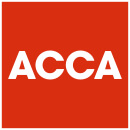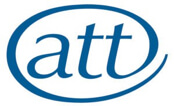To incorporate or not to incorporate? This has been a regular question asked amongst law firms and generated many debates between partners.
It can be a contentious issue especially when there may be a blend of partners with variable experience at the firm, as they may have different views as to what is the best model to adopt. The previous differential in headline tax rates has also narrowed given the increase in Corporation Tax and tax on dividends in recent years.
The trend over recent years has been for traditional partnerships and sole traders to incorporate into a limited liability partnership (LLP) or a company. But what is the best structure?
Well as with everything, it depends!
An LLP is a separate legal entity with limited liability for its members. The main difference between an LLP and a limited company is that an LLP has the organisational flexibility of a partnership and is taxed as a partnership. In other respects, it is like a limited company.
It is important to understand the implications of any structure you choose. These range from how you operate the business to the way HMRC treats and taxes the profits.
Two of the main considerations may be the partners attitude to commercial risk and taxation.
Commercial risk
Although partners will have PI insurance, which will understandably give a degree of comfort, unfortunately there may be an occasion when the insurance doesn’t provide full cover, i.e., due to an administrative error, a delay at renewal time, or a claim that is more than the insured limit. In a partnership, the partners would then become personally liable, therefore putting personal assets at risk.
Limited companies and LLP’s offer reduced personal risk. However, they don’t provide complete protection. If the business goes into insolvency the directors of companies could face claims for wrongful trading and similarly, members of an insolvent LLP may face recovery of payments.
Taxation
LLPs are taxed the same as a partnership, in that partners receive an allocation of profit (based on the partnership agreement) and are taxed on that profit irrespective of whether they have drawn it out of the LLP or not. The partner will pay income tax at the usual income tax rates, usually with a significant part taxed at the higher rate of 40% or the additional rate of 45% (if their profit share exceeds £125,000) and class 4 national insurance on the profit. A regular frustration of partners in partnerships and LLPs is that they struggle to plan for the tax they have to pay as they have limited control over it. It can also bear no correlation to the amount they have drawn in the period if drawings are fixed and not aligned to the profits generated.
In a company, profits will usually be taxed at the mainstream rate of corporation tax i.e. 25%. As Shareholders, income (drawings) tends to be split into three elements:
-
Directors tend to draw a modest salary and pay PAYE on this.
-
As Shareholders, dividends can be paid out on a monthly and or ad-hoc basis as appropriate,
- Employer pension contributions can also be paid out on a monthly or ad-hoc basis in addition to the above
Therefore, the corporate structure provides more flexibility and opportunity for income tax planning for the owners of the firm.
The corporate structure is also more tax efficient if the firm is trying to re-invest profits back into the business and therefore the partners are not drawing out all of the profits e.g. for growth plans; office improvement works; or building working capital. In this scenario, there is a tax saving as under the partnership model they are likely to be suffering a combined tax and NI rate of 42% or 47% on all profits generated, even though they are being left in the firm whereas the corporate model the tax rate is currently 25%.
There are other tax considerations to consider; one that has made the partnership model more attractive is avoiding the ‘’benefit in kind’’ regime which is applied to the corporate model, especially in relation to the high tax rate applied to cars in the business with high CO2. However, the days of the company car are not over! If you are willing to replace your car with an electric car, this currently only attracts a tax rate of 3% for tax year 2025/26, rising to 9% by 2030.
Succession planning
The corporate model is more complex in relation to bringing in new partners into the firm, compared to the traditional partnership or LLP. When appointing a new member into an LLP, the member would no longer be taxed under PAYE, they would be registered for self-assessment and would be taxed on their share of profits from the LLP instead. For a company, if the incoming “partner” has previously been an employee of the firm, then the employment related securities tax legislation is something that needs to be carefully considered.
However, a limited company structure can potentially offer more flexible options to support wider talent recognition and retention. Staff can be employees, directors, or shareholders. Subject to considering the tax issues, share incentive plans can be considered for a wider group of employees, as well.
It should be noted that any change in structure will need authorisation from the SRA.
Ultimately, if you are looking to grow your firm by reinvesting in the business and to bring in and retain the next generation of talent, the corporate model could be an attractive proposition.
We have helped many firms navigate through this difficult conundrum of getting the right structure to suit their business goals and future plans. Please contact our Legal Sector Team at Rickard Luckin if you would like to discuss this for your firm or would like more information.
If you have any questions about the above, or would like more information specific to your circumstances, please enter your email address below and we will get in touch:













